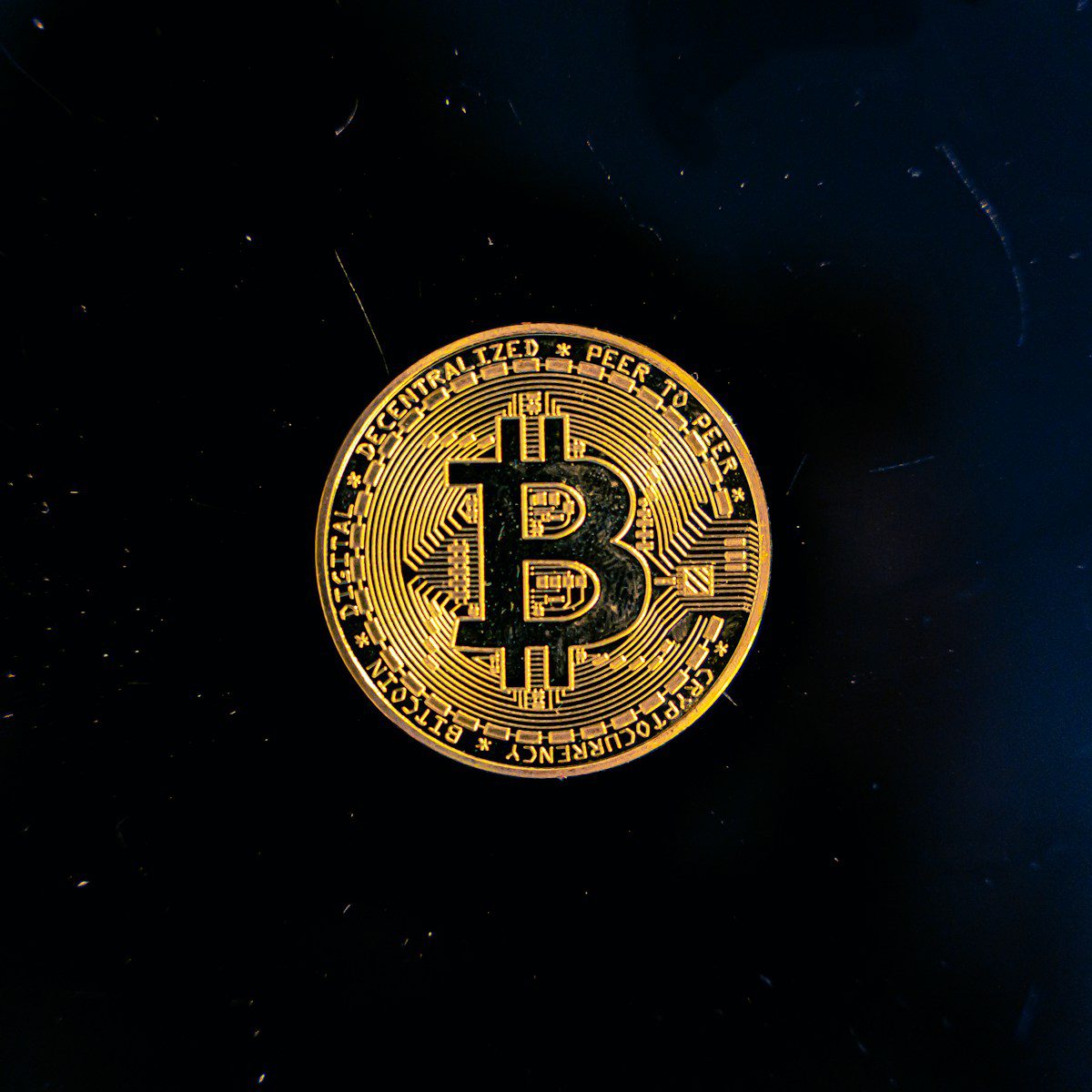
Best crypto books recommendations

“Mastering Bitcoin” by Andreas M. Antonopoulos remains a definitive guide for both beginners and advanced learners seeking to deepen their understanding of blockchain technology and investment strategies. This text offers detailed explanations of the protocol’s mechanics, enabling readers to build practical knowledge rather than relying on surface-level information.
For those prioritizing structured education, “The Intelligent Investor” by Benjamin Graham provides timeless principles applicable to cryptocurrency markets, emphasizing risk management and value assessment. While not exclusively about digital assets, its investment frameworks empower readers to approach new financial instruments with critical insight.
“Blockchain Basics” by Daniel Drescher breaks down complex distributed ledger concepts without requiring prior technical expertise. Its step-by-step methodology encourages experimental learning, which is ideal for novices aiming to establish foundational knowledge before tackling more advanced material authored by specialists in the field.
Recommended Literature for Advanced Investment and Blockchain Education
For those seeking a deeper understanding of digital asset investment strategies, “The Bitcoin Standard” by Saifedean Ammous offers a rigorous economic analysis of Bitcoin’s role as sound money. This work provides a detailed historical context and technical breakdown, challenging readers to evaluate monetary principles through the lens of decentralized currency. The author’s approach stimulates critical thinking about value storage mechanisms beyond traditional fiat systems.
To enhance knowledge in decentralized applications and smart contract development, consider “Mastering Ethereum” authored by Andreas M. Antonopoulos and Gavin Wood. This text delivers comprehensive coverage of Ethereum’s architecture, including practical coding examples using Solidity. It bridges theoretical concepts with applied experimentation, enabling readers to build and audit complex contracts, an essential skill for advanced blockchain professionals.
Further Educational Resources for Technical Mastery
“Blockchain Basics” by Daniel Drescher presents a step-by-step methodology to understand distributed ledger technologies without requiring prior programming experience. By dissecting consensus algorithms, cryptographic primitives, and network structures into accessible segments, the book encourages experimental learning through illustrative case studies. Its structure supports incremental knowledge acquisition crucial for thorough technical education.
Investment-focused literature such as “Cryptoassets: The Innovative Investor’s Guide to Bitcoin and Beyond” by Chris Burniske and Jack Tatar integrates quantitative analysis with market dynamics. This resource explores portfolio construction methodologies adapted for volatile digital assets while highlighting risk assessment models grounded in statistical data. Readers gain insight into empirical evaluation techniques that refine decision-making processes.
- “Digital Gold” by Nathaniel Popper chronicles the developmental history of cryptocurrency pioneers, providing contextual background on technological innovation paired with financial implications.
- “Token Economy” by Shermin Voshmgir examines tokenization frameworks and incentive design within blockchain ecosystems, combining economic theory with protocol-level mechanics.
A deliberate reading plan incorporating these texts fosters progressive mastery from foundational theories to applied investment tactics within blockchain technology. Engaging with authors who combine empirical research with hands-on case studies enriches educational outcomes while cultivating analytical rigor necessary for sophisticated portfolio management or protocol development endeavors.
This curated selection empowers learners to experiment intellectually alongside practical investigations–such as simulating smart contract deployment or evaluating asset volatility patterns–thereby transforming abstract concepts into operational knowledge. Encouraging such exploration nurtures confidence in interpreting complex data flows inherent in decentralized networks and enhances the ability to innovate responsibly within this evolving field.
Books Explaining Blockchain Basics
For those entering blockchain technology, clear and precise educational materials authored by experts in the field are indispensable. A fundamental title often suggested is “Blockchain Basics” by Daniel Drescher, which carefully unpacks core concepts without assuming prior technical knowledge. This resource structures its content through 25 concise steps, making it ideal for readers seeking a methodical understanding that bridges theoretical principles with practical applications.
Another recommended source is “Mastering Bitcoin” by Andreas M. Antonopoulos, which balances beginner-friendly explanations with progressively advanced discussions on cryptographic protocols and distributed networks. While initially accessible to novices, this work also serves as a valuable reference for those aiming to deepen their comprehension beyond surface-level investment analysis.
Core Themes and Technical Foundations
Authors focusing on foundational education tend to emphasize the decentralized ledger mechanism, consensus algorithms, and smart contract architecture. For instance, “The Basics of Bitcoins and Blockchains” by Antony Lewis offers structured comparisons between proof-of-work and proof-of-stake systems, highlighting their respective security assumptions through empirical case studies such as Bitcoin’s energy consumption versus Ethereum’s transition roadmap. This type of detailed breakdown supports experimental learning by encouraging readers to evaluate technological trade-offs firsthand.
Educational texts frequently integrate real-world scenarios to elucidate how blockchain impacts fields like supply chain management and digital identity verification. For example, some publications present modular exercises guiding readers through constructing simple blockchain models or simulating transactions within test environments. These approaches foster analytical skills essential for assessing potential investment risks grounded in technological robustness rather than speculative hype.
- “Blockchain Revolution” by Don Tapscott introduces systemic implications while maintaining accessibility suitable for beginners transitioning toward advanced topics.
- “Bitcoin and Cryptocurrency Technologies” by Arvind Narayanan et al. offers university-level depth with extensive references and problem sets supporting rigorous academic study.
The curated selection of these instructional works reflects varied authorial perspectives yet converges on fostering critical inquiry about blockchain’s capabilities and limitations. Readers are encouraged to complement initial readings with whitepapers such as Satoshi Nakamoto’s original Bitcoin publication or Ethereum’s Yellow Paper to validate conceptual understanding through primary sources.
This progressive accumulation of knowledge equips individuals not only for informed participation in the technology’s ecosystem but also establishes a solid groundwork for evaluating investment opportunities based on technical merit instead of market speculation. Engaging deeply with these resources encourages an experimental mindset–prompting questions about scalability challenges, cryptographic security layers, or governance models–that cultivates confidence necessary for advancing into specialized domains within blockchain technology.
Guides For Crypto Trading Strategies
For those seeking to improve their trading tactics, targeted literature offers substantial knowledge that bridges theory and practical application. Novices can initiate their education with materials that clarify fundamental principles of market behavior, order types, and risk management techniques. Such resources typically include detailed case studies illustrating common pitfalls and profitable entry-exit points, enabling readers to develop a solid foundation for informed decision-making in volatile environments.
Advanced traders benefit from texts focusing on algorithmic approaches, quantitative analysis, and sentiment-driven strategies. These works often provide step-by-step methodologies for constructing models based on technical indicators like Moving Averages, RSI, and MACD, supported by historical data backtesting. By integrating these insights with real-time market signals, experienced investors can refine their systems to optimize returns while minimizing exposure to unpredictable fluctuations.
Educational Pathways Through Structured Reading
A curated selection of instructional guides enhances the learning curve by presenting progressive concepts–from understanding blockchain mechanics to employing complex derivative instruments such as futures and options. Comprehensive explanations of portfolio diversification strategies highlight how combining various digital assets reduces unsystematic risks. Readers are encouraged to experiment with simulated trading platforms alongside theoretical study to validate hypotheses before committing capital.
Quantitative research publications provide deeper analytical frameworks exploring market microstructure and behavioral finance within decentralized exchanges. Investigations into liquidity metrics, slippage impact, and arbitrage opportunities illustrate the nuanced dynamics influencing price formation. Incorporating empirical findings into personal investment approaches cultivates critical thinking and adaptive strategy development essential for sustained success in evolving financial ecosystems.
Books Covering Cryptocurrency Security
For those seeking to deepen their understanding of cryptocurrency security, targeted literature provides invaluable insights into safeguarding digital assets and comprehending the underlying blockchain mechanisms. A notable resource is “Mastering Bitcoin” by Andreas M. Antonopoulos, which offers rigorous explanations of cryptographic principles, wallet security, and transaction validation. The author’s detailed breakdown of public and private key management equips readers with practical knowledge crucial for secure investment practices.
Advanced study materials such as “Cryptoassets: The Innovative Investor’s Guide to Bitcoin and Beyond” by Chris Burniske and Jack Tatar expand on risk assessment methodologies and the technical vulnerabilities inherent in different blockchain platforms. This work emphasizes the importance of diversified education covering both theoretical constructs and real-world attack vectors, fostering a comprehensive approach to portfolio protection.
Technical Approaches to Understanding Threat Models
An essential component within educational texts involves dissecting threat models specific to decentralized networks. Books like “Blockchain Security: A Practitioner’s Guide” by Joseph Bonneau et al. present empirical data on known exploits, including 51% attacks, Sybil attacks, and smart contract vulnerabilities. Through case studies analyzing incidents such as the DAO hack or Mt. Gox breach, readers gain context-driven perspectives that underline the necessity of continuous vigilance in cryptocurrency environments.
The authors methodically describe cryptographic algorithms such as SHA-256 hashing and elliptic curve signatures alongside best practices for cold storage solutions. Such information cultivates an advanced technical foundation necessary for constructing secure systems resistant to both external breaches and insider threats.
- Wallet architecture: Differentiating between hardware wallets, paper wallets, and multi-signature setups.
- Network vulnerabilities: Understanding risks related to consensus protocols and peer-to-peer communication layers.
- Smart contract auditing: Techniques for identifying logic flaws using formal verification tools.
The intersection of regulatory frameworks with technological safeguards is thoroughly examined in works like “The Basics of Bitcoins and Blockchains” by Antony Lewis. This text elucidates compliance considerations impacting security policies while reinforcing fundamental concepts through clear examples accessible even to those transitioning from traditional financial sectors.
- Beginner-level literature clarifies foundational concepts: definitions of digital assets, classification criteria, and overview of global regulatory bodies.
- Intermediate materials explore sector-specific regulations including stablecoins, security tokens, and initial coin offerings (ICOs), providing context-sensitive knowledge essential for portfolio diversification assessment.
- Advanced scholarship delves into emerging regulatory trends like central bank digital currencies (CBDCs) compliance frameworks and cross-border enforcement challenges.
The cumulative impact of engaging with such curated content shapes not only individual expertise but also informs institutional adaptation to shifting compliance demands. Anticipating future developments requires continuous monitoring of legislative amendments alongside technological innovation trajectories. This dynamic interplay will define investment viability and operational legality within the next decade’s ecosystem.
This layered educational approach encourages practitioners to formulate hypotheses regarding regulatory outcomes, test assumptions against documented precedents, and refine understanding through iterative analysis.
The convergence of juridical theory and blockchain technology forms fertile ground for experimental inquiry; questions arise about how adaptive smart contracts might automate compliance or how governance tokens influence regulatory accountability. Engaging with authoritative publications authored by seasoned experts provides the cognitive tools required to navigate these complexities confidently while contributing to ongoing discourse in this domain.
Cultivating this spectrum of knowledge–from fundamental principles suited for novices to sophisticated critiques aimed at advanced professionals–is instrumental in shaping resilient strategies that align investment decisions with evolving statutory frameworks.


